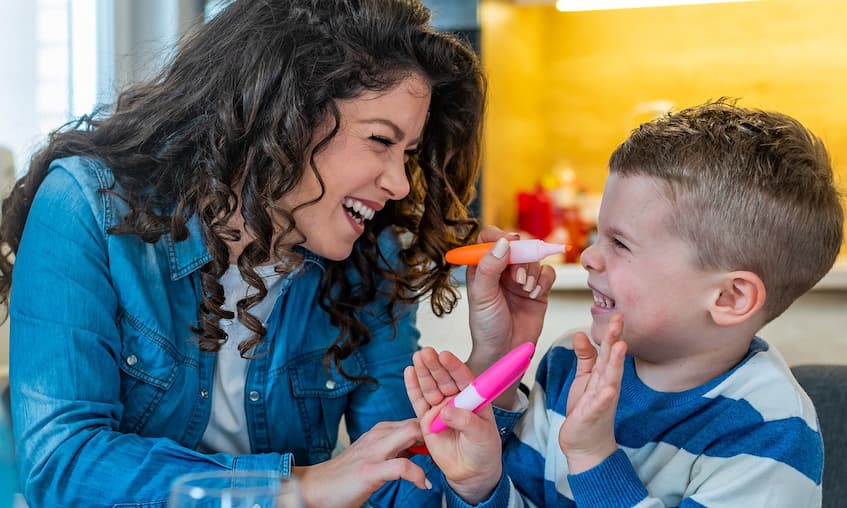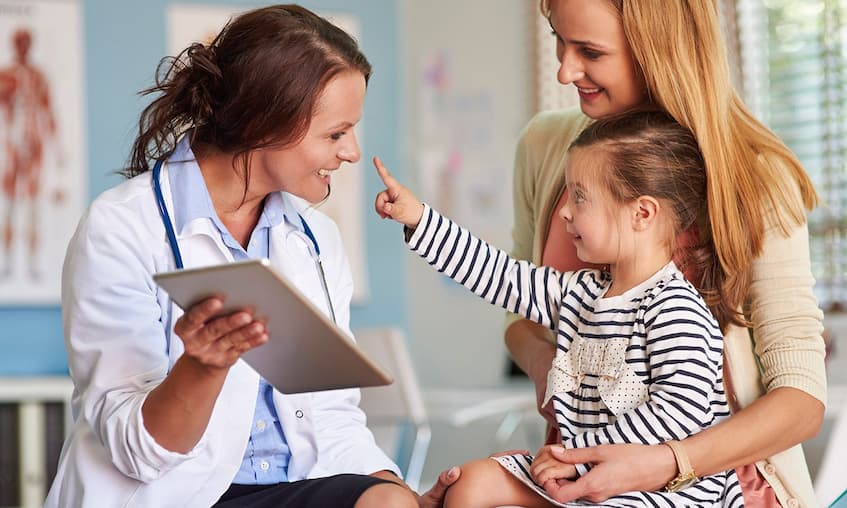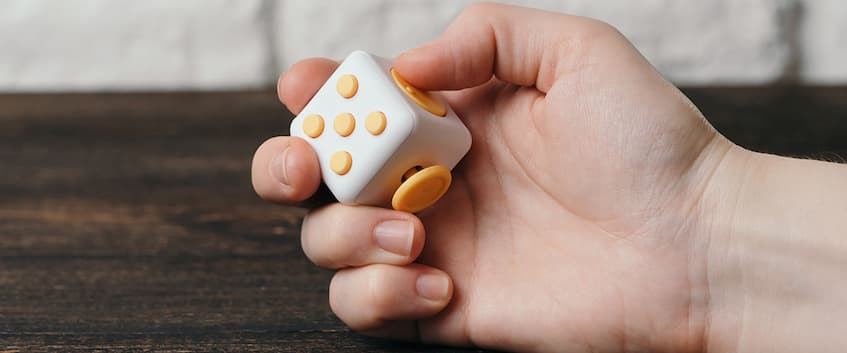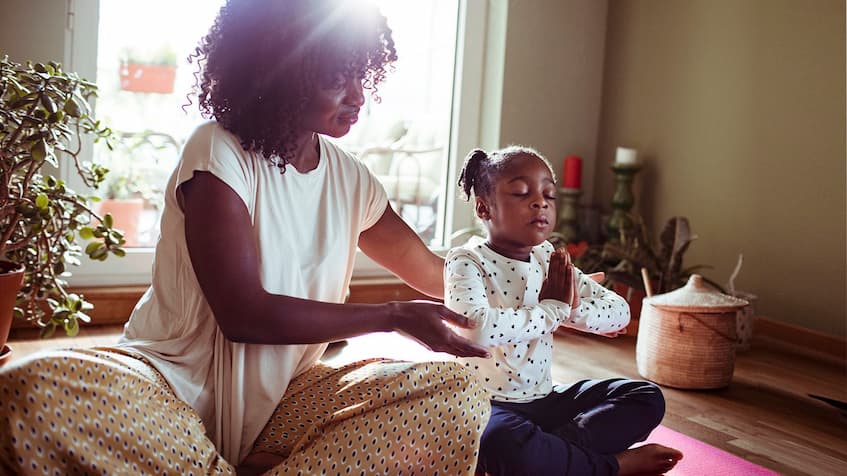
Children With Special Needs: Caring for a Child with ADHD
Raising a child is a difficult process. Children can often be nonconforming, fidgety and even show signs of aggression. Sometimes these behaviours are persistent and suggest a more serious underlying issue. ADHD (attention-deficit/hyperactivity disorder) is a medical condition affecting millions of children worldwide. Symptoms include fidgetiness, self-focused behaviour, lack of focus and even aggression. Children with ADHD often develop depression and anxiety, they have trouble keeping their emotions in check (leading to outbursts), and their lack of focus leads to many unfinished tasks and trouble following instructions. To diagnose it, a doctor will carefully study your child’s behaviour for more than 6 months in multiple environmental settings.
Contents
How to Adapt Your Lifestyle for a Child with ADHD?
Keep Their Behaviour in Check

Children with ADHD may throw tantrums and exhibit unnatural and disturbing behaviours, but you should always be patient with them and understand that their brain is wired differently from other children. Draw a line with them between what is acceptable and what isn’t. Set clear rules and guidelines and include rewards when your child follows them. To manage their aggressive outbursts in public – include “time-out” as a period to cool off and think about their negative behaviour. Essential oils are an efficient tool in calming a racing ADHD mind. Options such as vetiver, lavender, chamomile, frankincense and peppermint calm the restlessness while improving focus.
Healthy Diet
Pay attention to your kid’s diet and make sure it has enough proteins. Proteins help make neurotransmitters, improve communication between brain cells and prevent surges in blood sugar. Good protein-rich options are lean beef, pork, poultry, fish, eggs etc. In turn, you should limit their sugar intake, since it encourages hyperactivity.
Limit Distractions
They easily welcome distractions, so you should limit television, computer and video games. Offer them limited choices in clothing, food or toys so they don’t get overwhelmed. Keep your home tidy at all times to limit distractions and break down their everyday tasks into smaller manageable pieces. To help them stay on task, use charts and checklists and use frequent reminders. Try to spend as much time outdoors as you can, doing engaging activities that will burn their energy in a healthy way.
Clothing and Bedding
Help them in the process of getting dressed and putting on shoes. Children with ADHD especially struggle with learning how to tie their shoes. If you can’t manage to teach them yourself, you can use guides and kits.
Weighted blankets are proven to calm children with ADHD, but you should also opt for comfortable bedding, with materials such as cotton or bamboo, which is also hypoallergenic.
How Fidget Toys Help Children with ADHD?

ADHD makes it difficult for children to focus on tasks such as listening to a teacher or reading – they have a constant need to do something with their hands and bodies. They would often tap with their hands and feet and make noise, which is especially problematic in a classroom. It’s important to reduce the ever-present stigma by talking to your child’s teacher about their disorder and letting them know how they can help.
Luckily, there are ways to ease this condition. For instance, fidget toys are specially designed therapeutic devices that help by keeping kids’ hands occupied which calms their mind, improves their focus and even relieves anxiety. They’re helpful if a student needs to plan work or remember important information. Australian parents swear by the effectiveness of fidget toys and report big improvements in their children’s day to day lives after using them, especially at school.
These tools come in vivid colours and various forms:
- Fidget balls and cubes with buttons, switches and other fidgeting options;
- Rubber balls and stretchy toys;
- Finger puppets;
- Rubber rings;
- Mesh balls;
- Squeezing ball tools;
- Puzzles which include connecting matching pieces;
- Marble fidgets;
- Tangle toys;
- Chain fidget toys;
- Fidget putty;
- Fidget bands;
- Fidget spinners;
They’re designed to feel good in your child’s hand and provide activities with repetitive motions of clicking, spinning, rolling or stretching which boost their concentration and productivity.
That being said, stress toys aren’t exclusively meant for children with ADHD. They’re suitable for kids affected with autism and sensory disorders. They can also be beneficial for adults or anyone that is perfectly healthy but needs a bit of a concentration boost. We’ve all found ourselves either playing with our hair, our jewellery or doodling during a meeting. Fidget tools can help us release pent-up nervous energy more effectively. Studies even show that using stress balls at exams significantly improves the participants’ results.
ADHD Medication and Therapy Options

After your child is diagnosed with ADHD, a paediatrician will prescribe the necessary medicines or give you therapy options. While this treatment doesn’t eliminate the disorder, it can help to deal with its symptoms in day-to-day life. Stimulant ADHD medicines are a safe and effective way of treating ADHD in children. Some are approved for children over the age of 3, while others are only suitable for children over the age of 6. They can be used alone or combined with behaviour therapy.
Two types of stimulant medications are available – immediate-release (short-acting) medications and extended-release (intermediate/long-acting) medications. Your child should take immediate-release medications once every four hours, or extended-release medications once every morning. There is an abuse potential of these drugs, so you should closely supervise your child when they use them. If these are ineffective or cause serious side effects, you should try non-stimulant medications.
Since young children tend to have more side effects from ADHD medications, it’s recommended that parents turn to parent training in behavioural management as an alternative, as it’s shown to work as well as medication. For older children, your doctor may suggest behavioural therapy or behavioural interventions in the classroom.
Behaviour therapy can include you together with your child, or just them alone. This treatment strives to transform your kid’s negative and destructive energy into a positive one. It won’t rewire their brain, but it will teach them useful skills to manage their behaviours at home or at school.
There are others more interesting therapy options, such as play therapy, music therapy, art therapy and equine therapy, which provide your child with fun experiences and creative development.


No Comments